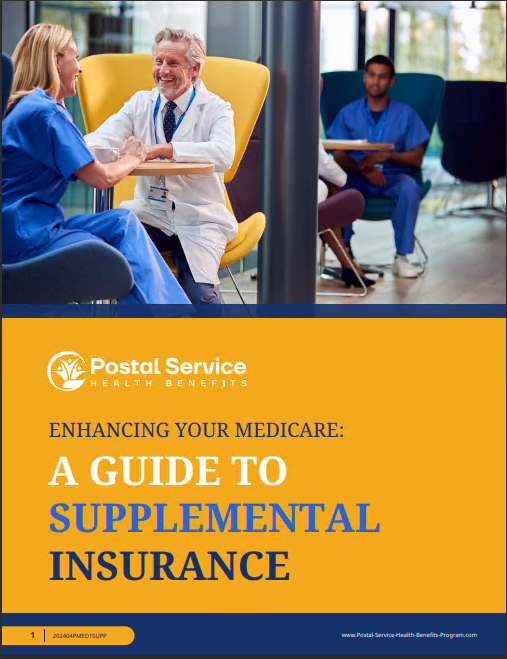Key Takeaways
- Postal workers need to understand the key changes coming to the Postal Service Health Benefits (PSHB) program in 2025 to make informed decisions about their coverage.
- Health plan changes in 2025 may affect coverage options, benefits, and processes, so being proactive now can help postal workers and retirees navigate these updates smoothly.
Why Postal Workers Need to Pay Attention to Health Plan Changes Coming in 2025
With 2025 on the horizon, postal workers and retirees must stay vigilant about upcoming changes to their health plans. The Postal Service Health Benefits (PSHB) program, set to replace the current Federal Employees Health Benefits (FEHB) program for postal workers, introduces new considerations. Understanding the impact of these changes is crucial for every United States Postal Service (USPS) worker, whether currently employed or retired, to ensure they maintain access to quality healthcare while managing costs effectively.
The Postal Service Health Benefits (PSHB) Program: What’s Changing?
The PSHB program will bring significant changes for USPS employees, transitioning them away from the FEHB program. This shift, outlined in the Postal Service Reform Act of 2022, is designed to separate postal employees‘ health benefits from other federal workers, creating a dedicated system for USPS workers and retirees.
The PSHB program will come into effect in 2025, and it will involve several key adjustments:
-
New Plan Offerings: USPS workers will no longer be covered by FEHB plans. Instead, they will need to enroll in PSHB plans specifically tailored for postal employees. These plans will be similar to the FEHB in structure but distinct in their administration.
-
Medicare Integration: Another significant change is the requirement for Medicare-eligible retirees to enroll in Medicare Part B. This integration aims to provide more comprehensive coverage while reducing overall healthcare costs for the Postal Service.
-
Enrollment Periods: Postal employees and retirees will have specific enrollment windows, which may differ from previous schedules under FEHB. Missing these periods could lead to gaps in coverage or limited options.
Why Are These Changes Happening?
The changes to the health benefits system for postal workers stem from long-standing financial challenges faced by the USPS. Rising healthcare costs and the increasing need to support a growing number of retirees have put significant pressure on the Postal Service’s budget. The transition to PSHB is seen as a way to ensure that USPS workers continue to receive robust healthcare options while addressing cost issues.
For workers and retirees, this shift requires attention to detail and an understanding of the benefits and limitations of the new system. Without careful planning, employees could face unexpected changes to their coverage and potential out-of-pocket costs.
What Postal Workers Need to Do
Postal workers and retirees should start preparing now for the transition to PSHB in 2025. By taking proactive steps, they can avoid surprises and ensure a smooth transition. Here are a few key actions to consider:
1. Review Current Coverage
It’s crucial to assess your current health plan under the FEHB and identify any gaps or areas where you need more coverage. Understanding how your existing plan compares to the new PSHB offerings will help you make an informed decision when the time comes to switch.
2. Understand Medicare Enrollment Requirements
For retirees, the integration with Medicare is one of the biggest changes. If you are approaching Medicare eligibility or already eligible, it’s important to understand how enrolling in Medicare Part B will impact your coverage and costs. Not enrolling in Medicare when required could lead to penalties or reduced benefits under the PSHB program.
3. Stay Informed About Enrollment Periods
Missing the enrollment windows can result in limited health plan options or delayed coverage. USPS workers should stay informed about key dates and deadlines to ensure they don’t miss out on the best plan options for their needs. It’s a good idea to mark important dates on your calendar and set reminders for enrollment periods.
4. Consider Family Coverage Needs
If you have dependents covered under your health plan, make sure you review how the PSHB program will affect family coverage. Some family members may need to make separate arrangements for healthcare coverage, especially if they do not qualify for Medicare.
5. Consult Licensed Insurance Agents
Given the complexity of the transition to PSHB, consulting with a licensed insurance agent can provide additional clarity. They can help you navigate the details of the new program and ensure you choose a plan that fits your healthcare needs.
Preparing for Medicare Integration: What Retirees Should Know
One of the more complicated aspects of the PSHB program is the Medicare requirement for eligible retirees. Here’s a breakdown of what retirees need to know:
-
Eligibility: If you are 65 or older and eligible for Medicare, you will be required to enroll in Medicare Part B when the PSHB program goes into effect. This is a major shift from the current FEHB program, where Medicare enrollment is optional for many retirees.
-
Cost Considerations: While Medicare Part B comes with a monthly premium, it also provides substantial benefits when combined with the new PSHB plans. Retirees need to evaluate their total healthcare costs under this new arrangement, including premiums, deductibles, and out-of-pocket expenses.
-
Enrollment Deadlines: Missing the Medicare Part B enrollment deadline can result in a late enrollment penalty, increasing your monthly premiums. Retirees should familiarize themselves with the enrollment process and make sure they sign up on time to avoid unnecessary costs.
How the PSHB Program Will Affect Active Workers
Active postal workers will also feel the impact of the PSHB program. Although they won’t be immediately affected by the Medicare requirement, they still need to prepare for the following changes:
-
New Health Plan Options: USPS workers will need to review the PSHB options and select a plan that fits their healthcare needs and budget. This means understanding the differences between available plans, including coverage levels and provider networks.
-
Annual Enrollment Periods: Active workers will also need to pay close attention to the new enrollment periods. Missing these deadlines can result in being locked into a plan that may not meet their needs for the entire year.
-
Changes to Benefits and Coverage: The structure of health benefits under the PSHB program may differ from what workers are used to under the FEHB. Workers should review their new plan’s benefits carefully to ensure it provides the necessary coverage for their health conditions or life stages.
The Importance of Staying Proactive
The transition to the PSHB program is a significant change for postal workers and retirees, but being proactive now can help minimize confusion and ensure a smooth transition. By staying informed about the changes, reviewing available options, and preparing for Medicare integration, USPS employees can protect their access to comprehensive healthcare coverage.
Resources for USPS Workers
As 2025 approaches, there will be many resources available to help postal workers navigate the shift to the PSHB program. The USPS will likely offer informational sessions, online resources, and guidance from licensed insurance agents to assist in the process.
Workers should take advantage of these resources to stay updated on the latest information and ensure they make the best choices for their health coverage needs. Additionally, considering how healthcare needs might change in the future can help workers choose plans that will serve them well over time.
Stay Ahead of the Changes
Staying ahead of the upcoming changes is key for USPS employees. While 2025 may seem far off, preparing now will allow for a smoother transition and help you avoid last-minute confusion or mistakes. Whether you are an active worker or a retiree, understanding the PSHB program and its implications for your healthcare is critical.






